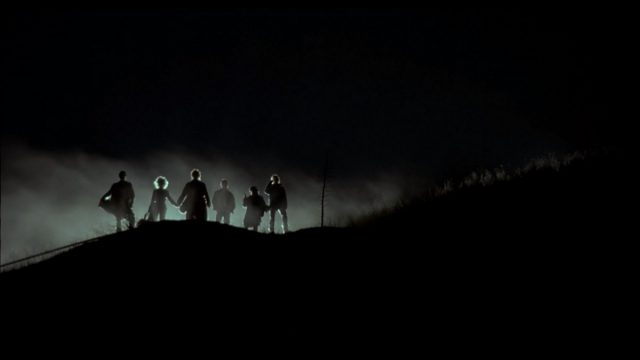I Do Movies Badly: Near Dark

The journey for the perfect metaphor ends with Near Dark, a wonderfully directed film that subverts the expectations of the Western genre, but that also signals that the “Others” are vile, bloodthirsty creatures whose influence can only be overcome by blood transfusion.
Read the summary of the essay, “Vampires, Indians, and the Queer Fantastic: Kathryn Bigelow’s Near Dark” from The Glorious and the Grotesque






























Vampires have been the villains for as long as vampire stories have been around. Nothing too surprising there. The distinctive thing about this story is that the two leads are sympathetic even while under the effects of vampirism (I think The Wolf Man* really pioneered that notion onscreen), and get to have their happy ending (which, yes, includes having vampirism reversed because our sympathetic lead doesn’t want to feed on people like the villains do). Of course, given the western-inspired genre I’d say the gang of vampires are supposed to be like a gang of blackhats from a cowboy movie rather than analogues for a minority sexual orientation.
*I also listened to the podcast on Coppola’s Dracula you were a guest on and wanted to point out that the trope of Dracula seeing Mina as his lost love from the past really seems to derive from The Mummy, which was in other respects largely just Universal repeating what they did with Dracula.
You mention the time in which it was made as a reason for it to be “problematic” under the interpretation you’re trying to slot it in, but it should be noted that Le Fanu’s Carmilla is even older than Dracula, is more overtly about homosexuality than the films you’ve discussed, and had multiple film adaptations prior to these.